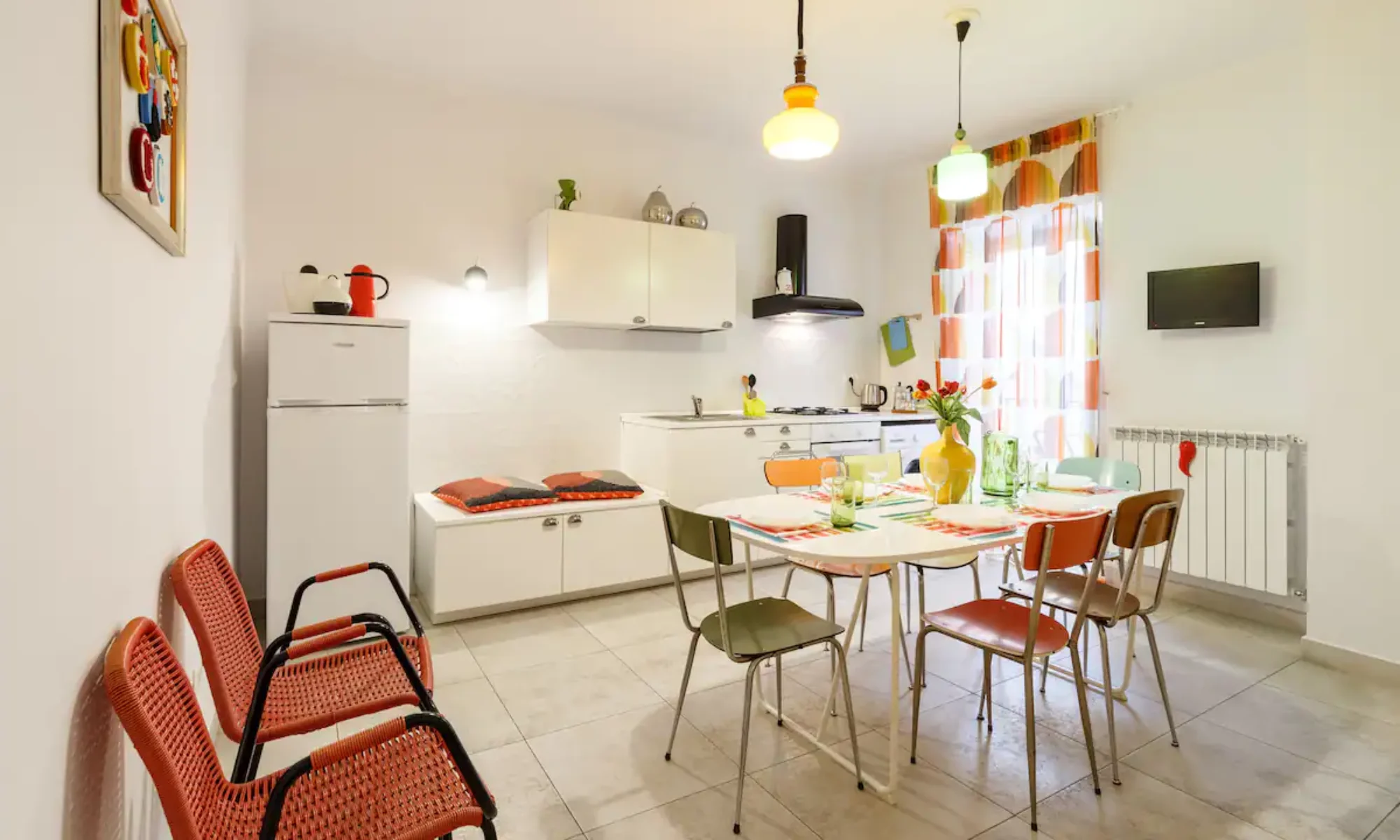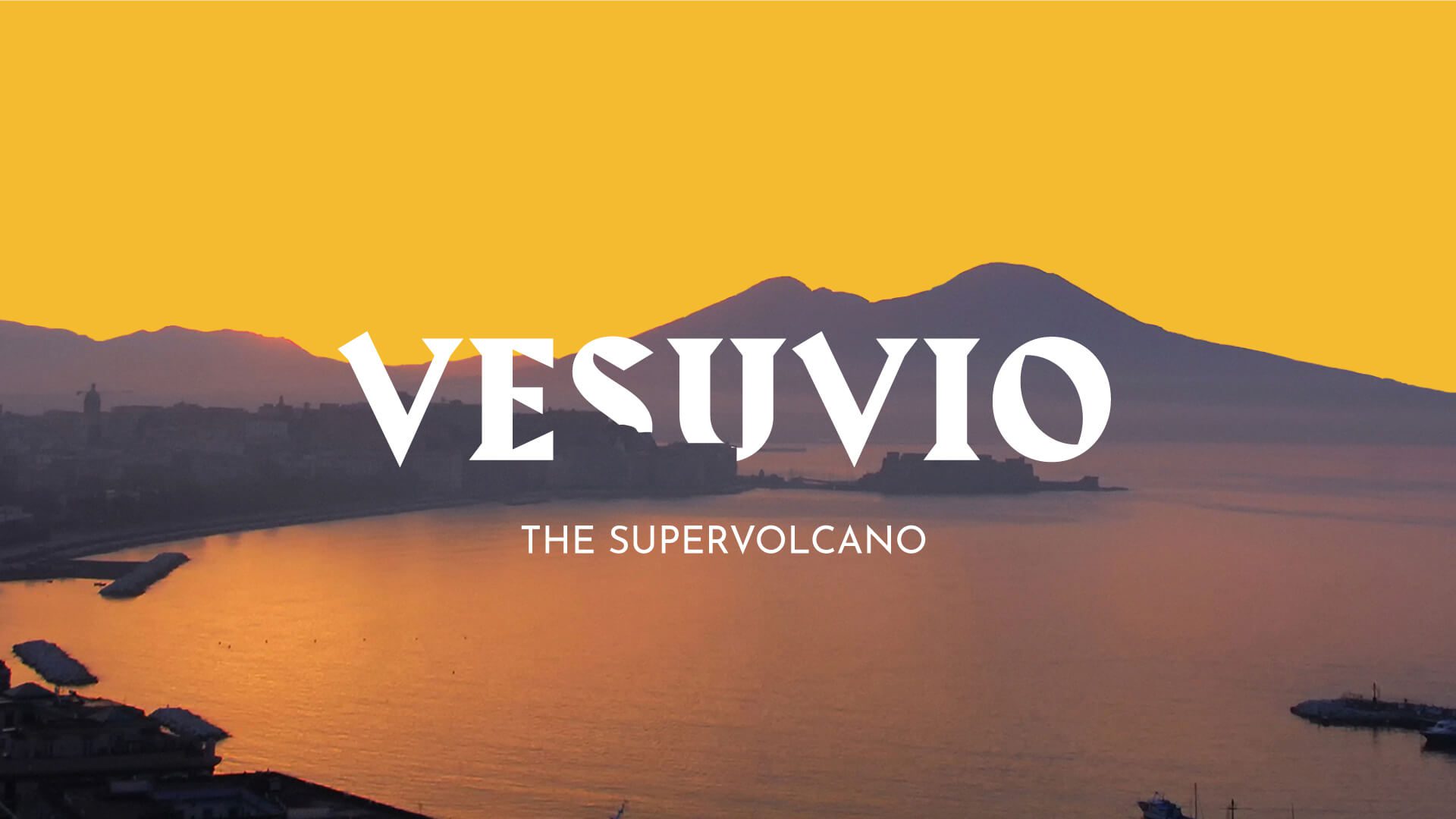About two thousand years ago, an eruption of the Naples volcano put an end to four Roman cities, including the famous Pompeii. The intense emotion that you feel when visiting the area comes from the respect for the immense force of nature, but also from the intimate contact with the civilization of that time.
Even though Naples is a volcanic city – not just in geological terms, but also in terms of its character – you never have to worry too much when visiting its volcano. If Vesuvius were to start erupting – as it has done many times since that year 79 in which it destroyed and buried the Roman cities of Pompeii, Herculaneum, and Stabia – you could get to safety in time, because this is perhaps the volcano under closest surveillance in the world. There are warning plans, and plans for the potential evacuation of the local populations. But you still have the thrilling feeling at walking on the back of a sort of gigantic live animal, which today is asleep but alive, in a relationship with the omnipotence of nature, which is much greater than us, and which is not easy to describe in words.
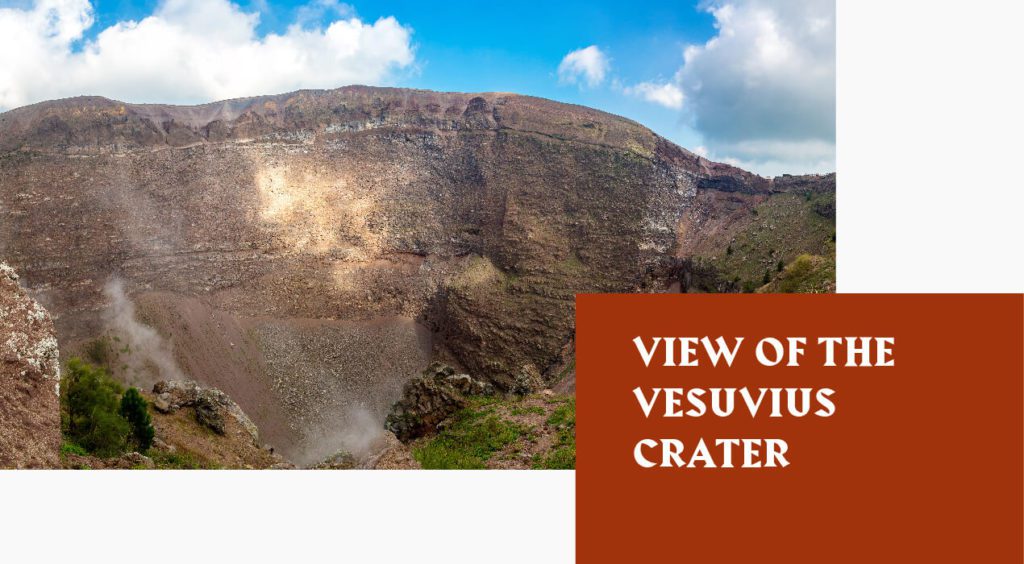
Vesuvius
Climbing Vesuvius is not a real adventure. In fact, it’s not even a real climb, because you can get there by bus – in just half an hour from Pompeii, if it’s from the Roman city that your visit to the area begins – and simply walk uphill to the summit. The spectacle of the crater, huge and a little threatening, even now that it is a little quiet, will already be in itself a good reason to convince you, but the real wonder is another one: the panoramic view of theGulf of Naples and of the city on the sea. It’s like dominating the gulf from a low-altitude airplane or a helicopter. Priceless.
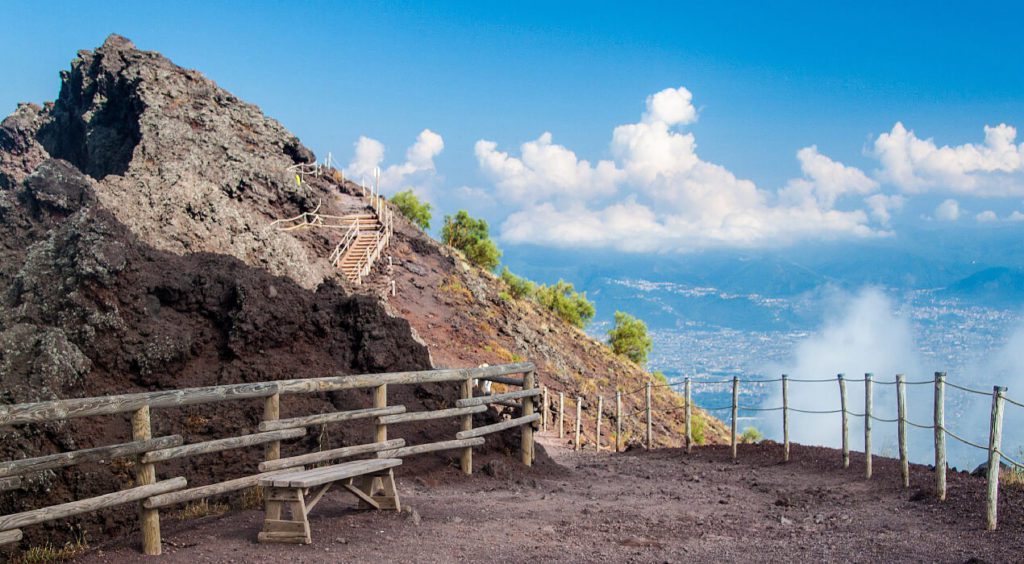
The Pompeii ruins’ area in which you find yourself is part of the Vesuvius National Park, which was established about twenty years ago; you have to take into account the cost of an entrance ticket, but on the other hand you have the certainty of finding yourself in a well-kept landscape.

It is marked very clearly where it is best not to venture, and the main path leading to the crater (there are other paths in the park, not all of which are that easy to walk) is comfortable and its boundaries are clearly indicated. Speaking of nature, do you recognize the broom that are at odds with the harsh landscape and give signs of life? Their flowering period – sudden spots of a particular yellow, sharp on the dry ground – is spring-summer.
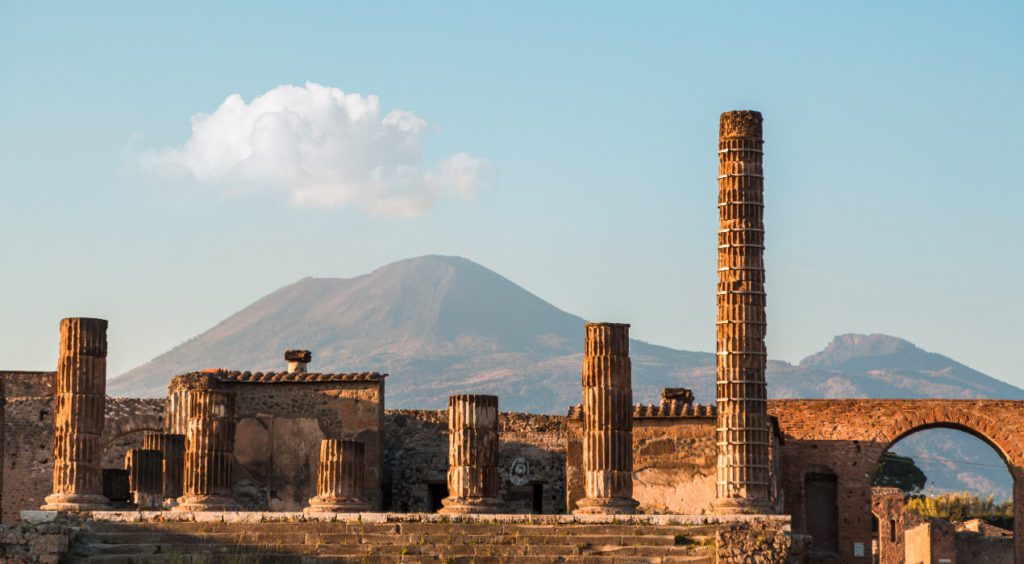
Ruins of Pompeii
Pompeii is today one of the largest excavation sites open to the public in the world, recognized by UNESCO as a World Heritage Site. As for its importance, then, it is absolutely unique in having preserved an entire Roman city in its everyday life, which was suddenly interrupted and has remained embalmed in a giant model on an urban scale.
If you want to be methodical, you can start your visit from the museum, immediately becoming moved by the human figures of the inhabitants surprised by the eruption. They look like real people, but they are simply the casts – obtained by archaeologists pouring plaster into certain cavities where the presence of human bones was guessed – of people trapped by the ash rain that erupted from Vesuvius. Over the centuries the ash layer has solidified, the bodies have dissolved, but the cavity formed by their shapes has remained. It seems as if one is able to talk with people from two thousand years ago, and it’s indescribable.
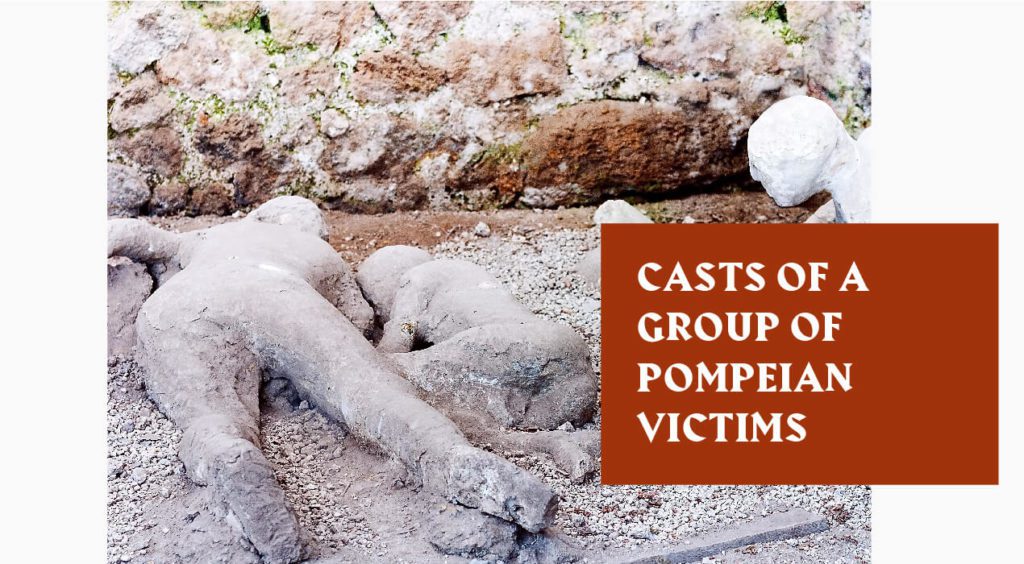
Rather than by human solidarity, you are impressed by the historical-artistic side when you visit the homes of ancient Pompeii, such as the House of the Faun, that of the Vettii or that of the Golden Cupids, which take their names from the dominant subjects of their extraordinary frescoes or from their owners. Even before arriving at the houses, you may be walking across the public spaces of the ancient city: the Basilica where justice was served, the Forum where people gathered, the temples where the gods were worshiped and even the Lupanar – which in today’s language we would call the brothel – with its X-rated paintings.
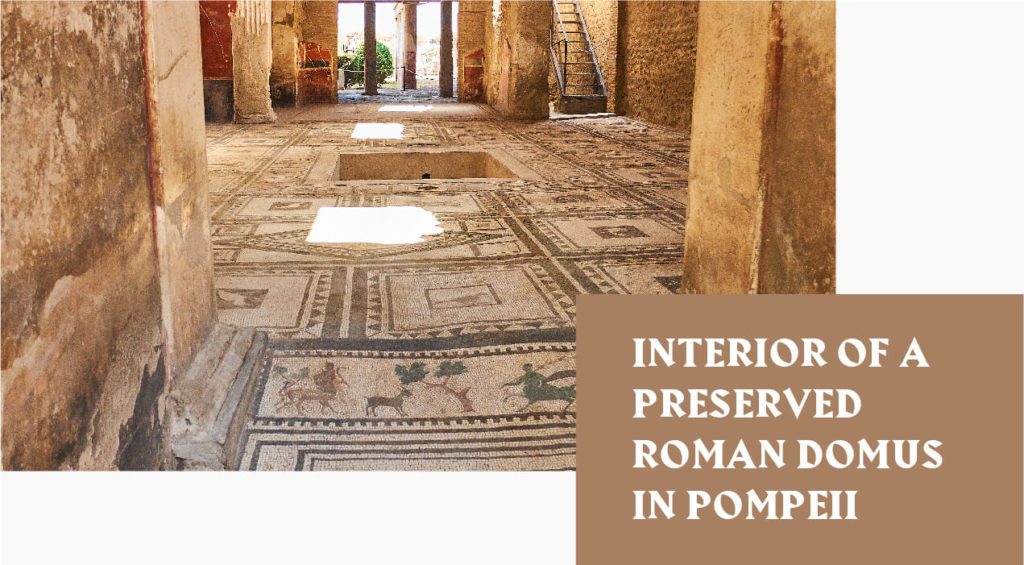
What is impressive everywhere are the three dimensions: forget about the archaeological excavations found elsewhere in Europe, with their remains of reconstructed walls that are maximum one meter high. In Pompeii, the houses are still as tall as in the year 79. Unique is an understatement.

2: Frescoed wall inside a Pompeii domus
In the majestic stillness of the amphitheater – with the grass in the meadow that now colonizes the steps from where the ancient Pompeians watched the armed fights of gladiators – you could think of the Pink Floyd concertLive at Pompeii. But you cannot remember being there in person, because that show had no audience… It was only a private recording. The leader of the group, David Gilmour, came back here a few years ago to hold a real concert, the only show in the Pompeii amphitheater in the last nineteen centuries. More than rock memories, in any case, it is significant that this one in Pompeii seems to have been the most ancient permanent amphitheater ever built in the Roman age, so important and rich was the city.

Ruins of Herculaneum
Still under the Vesuvius, but about twenty kilometers to the west and much closer to Naples, you can find the Roman excavations of Herculaneum, less extensive but equally impressive, and as integrated into modern-day Ercolano. There would still be plenty to dig around, if in the area of archaeological interest there were not the houses of today’s inhabitants, obviously perfectly legitimately. Here the quality of the three-dimensional perception is even more spectacular than in Pompeii: on the paved roads you can walk like on any other non-archaeological road, the houses of two thousand years ago – particularly notable are the Houses of the Hotel, of the Mosaic Atrium and the Deer – seem to have been built yesterday, and sculptures and frescoes come naturally to greet you, in vivid shapes and colors. Pinch yourself to wake up: you’re not dreaming, and it’s not a Disneyland reconstruction. It’s all true.
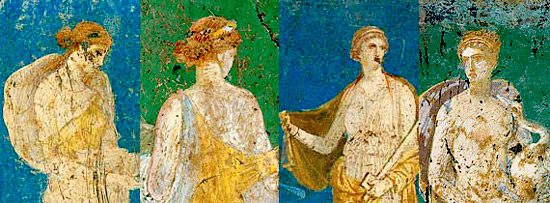
Ruins of Stabia
You can also visit what remains of Stabiae, which, vice versa, is farther south from Pompeii and which has had a different story. The settlement was repopulated not long after the eruption of the year 79, and today the excavation area is isolated in the middle of modern Castellamare di Stabia. Five residences of the ancient Roman city have resurfaced: Villa Arianna and Villa San Marco, Villa Petraro and Villa Carmiano, underground, and the so-called “Second Complex”. Villa San Marco was built in the early imperial era and remodeled in the Claudian age: access, today from the spa area, leads to the three rooms of the “calidarium,” “tepidarium,” and “frigidarium,” from which you go to the porticoed garden with pool. Here it is as if the context was lacking, but the houses, the sophisticated walls, the mosaic floors, and above all the ancient Roman frescoes are of the same quality as those of Pompeii and Ercolano. If you have a taste for detail rather than the whole, then Stabia too is not to be missed.
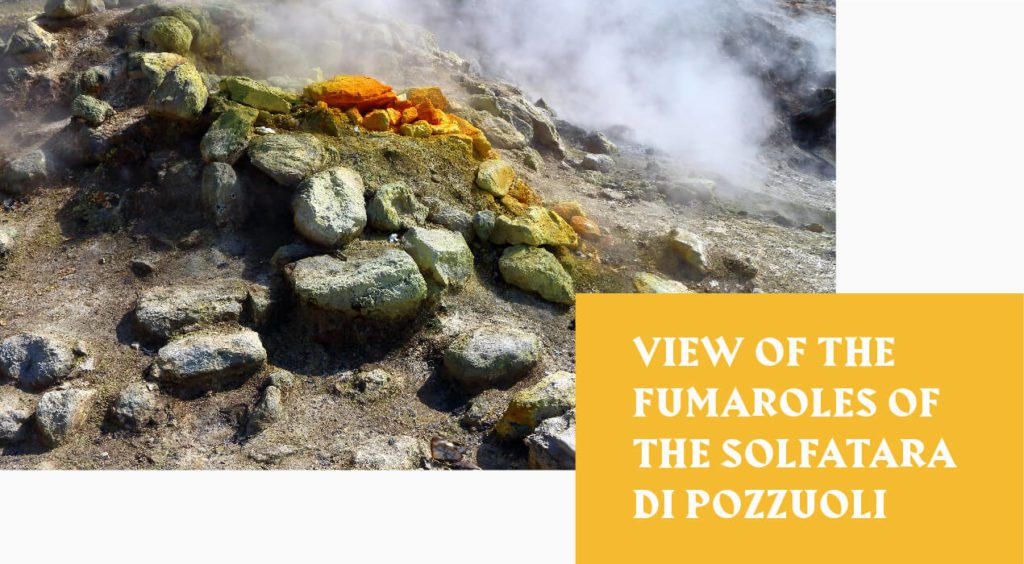
Visit the magnificent Phlegraean Fields
The gigantic cone of Vesuvius dominates the whole area of Naples, but it is certainly not the only volcanic presence around the city. By public transport you can reach the Phlegraean Fields from Naples, an area just west of the regional capital toward Pozzuoli and the islands of Procida and Ischia, where volcanic activities appear smaller in size, and yet are just as evident, and even more spectacular.
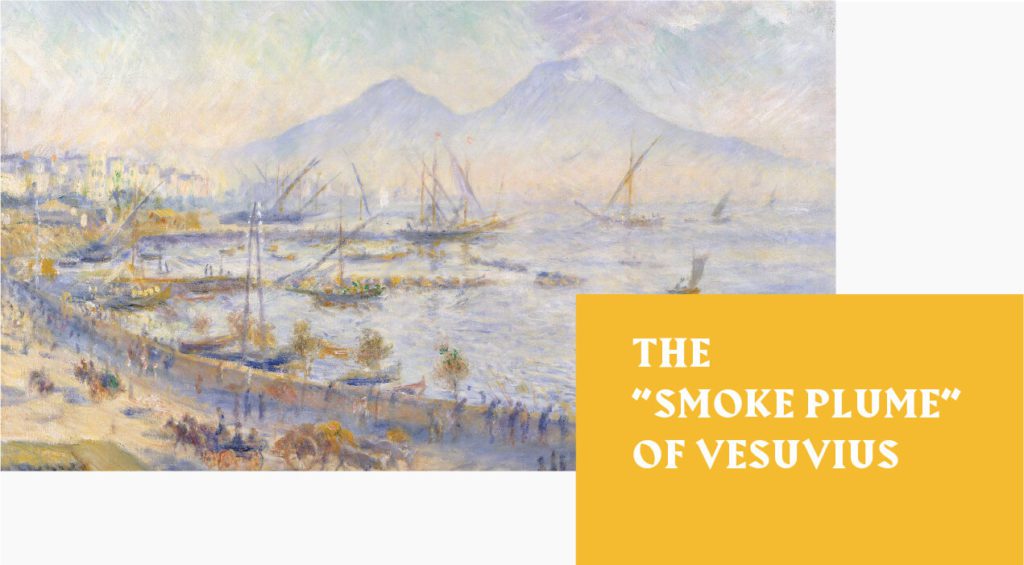
The Vesuvius no longer has – as it had until the eruption of 1944 – a clearly visible plume of continuous smoke toward the sky. Here, however, from the crater of the Solfatara a practically continuous fumarole of sulfur dioxide and boiling mud spouts are still ejected. By the by, it is here that the volcanic shots of the Live at Pompeii video were shot.
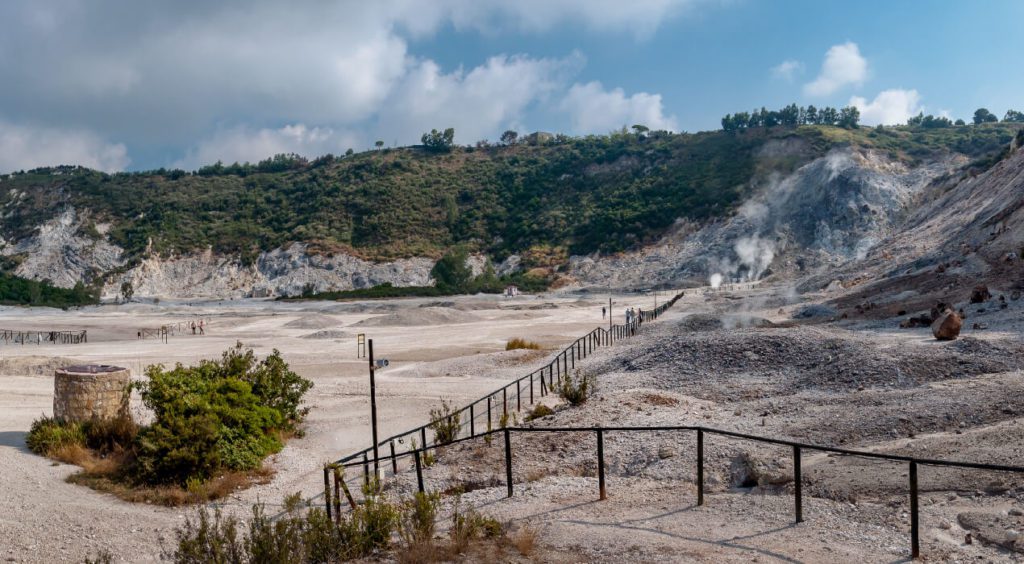
The fumaroles are not geysers, as you would think, but they are very close to them. Respect the warnings and do not enter the fenced areas: sulfur fumes, even if they are not poisonous, can make you dizzy if you get too close. The Solfatara is in fact in a quiescent state, but is still quite active, and is only one of the forty volcanoes that make up the Phlegraean Fields.
In the big, extinct crater of the Astroni, which is now a natural oasis managed by the World Wildlife Fund, you can take guided tours or quiet walks in the greenery around small lakes, instead of around sulfur fumes, and in the area there are also natural thermal springs, like those in Agnano. The famous spas on the island of Ischia also belongs to the volcanic system of the Phlegraean Fields.
The movement of the ground below you is too slow for a human being to be aware of it, but the measurements show a imperceptible continuous up and down of the Phlegraean Fields with respect to sea level. The scientific word for this phenomenon is bradyseism, and this too is a volcanic phenomenon. The temple of Serapis in Pozzuoli, which is more or less two thousand years old, and which is obviously lower than the city around it, is an obvious historical example.

Ruins of Baia
As if to confirm the parallel lives between volcanic activities and ancient civilizations, the archaeological remains of the Roman Baiae, south of Pozzuoli, are part of the Phlegraean Fields. Find the so-called temples of Diana and Venus in today’s village, next to the small port on the Gulf of Naples, and it is not too surprising to find that they were actually spa buildings, so important that only the dome of the Roman Pantheon was larger than these.
Nor does it surprise you – since we are in the area of bradyseism – to learn that the ancient Baia is today submerged, protected as a marine park at a depth of five to seven meters. You can touch it only if you are armed with scuba gear, and go to visit villas and nymphaeum of twenty centuries ago under the guidance of local divers. Another less adventurous choice could be an excursion on a boat with a transparent bottom: it is like looking at the Roman city from a window on the water.
